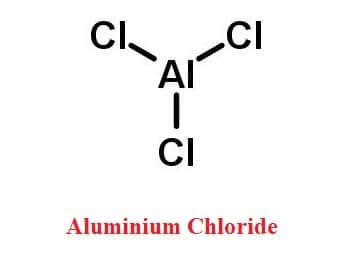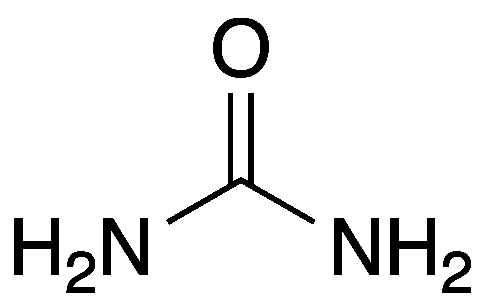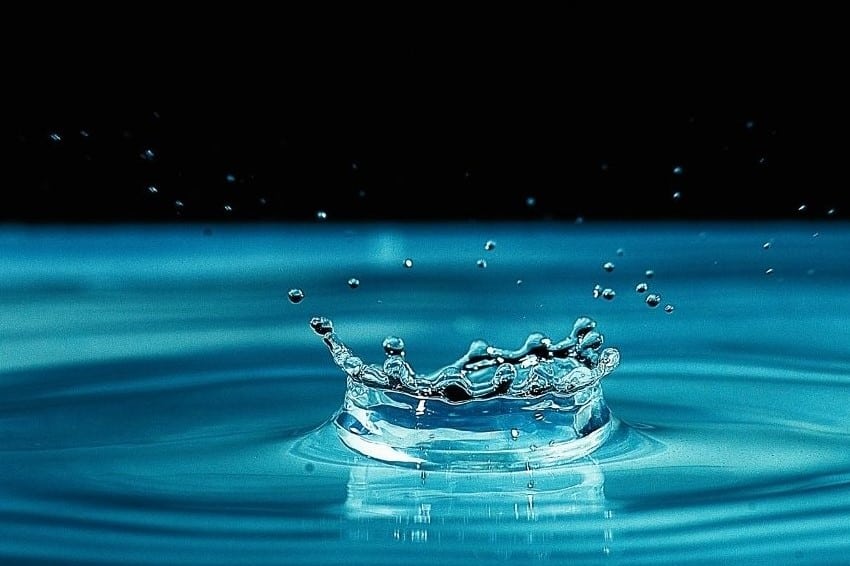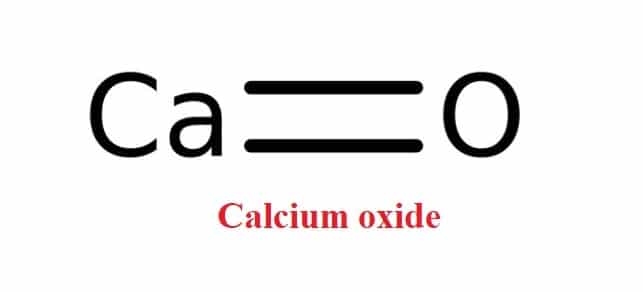Aluminium chloride (AlCl3) is a white or yellow crystalline chemical compound.
It is produced by reacting Aluminum oxide and hydrochloric acid. In addition, Its anhydrous form can be prepared by reacting with Aluminium and chlorine. Aluminium chloride is used in the manufacture of chemicals. It is also present in antiperspirants.

Table of Contents
Aluminium Chloride-Key Points
| Technical Name of compound | Aluminum Chloride (AlCl3) or aluminum trichloride or aluminum (III) chloride |
| Ionic character | Aluminum is a metal, and therefore AlCl3 is an ionic compound. |
| Appearance | White or pale yellow solid |
| Melting point | 192.6°C (anhydrous) 100°C (hexahydrate, dec.) |
| Density | 2.48 g/cm3 (anhydrous) 2.398 g/cm3 (hexahydrate) [Reference] |
| Uses | Used in the production of aluminum, in metallurgy, and as an ingredient in aluminum smelting. It’s also used in manufacturing petrochemicals like ethylbenzene and alkylbenzene. |
| Solubility | AlCl3 is hygroscopic and has a noticeable affinity for water. Therefore, aluminum chloride dissolves in water partially. |
| Toxicity | Corrosive and irritating to the eyes, skin, and mucous membranes |
| Structure | Cubic close-packed layered structure. |
| Molar mass | 133.341 g/mol (anhydrous) 241.432 g/mol (hexahydrate) |
Aluminum chloride is produced on a large scale through the exothermic reaction of aluminum metal with chlorine or hydrogen chloride at temperatures ranging from 650°C to 750°C.
Aluminum chloride can also be produced by combining copper chloride with aluminum metal in a single displacement reaction.
Real-Life Significance of Aluminium Chloride
Aluminium chloride (AlCl3) is a chemical compound that has various uses in our daily lives. Here are some of its significance:
- Antiperspirants: Aluminium chloride is widely used as an active ingredient in antiperspirants to reduce perspiration and odor. It works by blocking the sweat glands in the skin.
- Water treatment: Aluminium chloride is used in water treatment plants to purify water by removing impurities such as bacteria, organic matter, and algae.
- Petroleum refining: Aluminium chloride is used in petroleum refining to break down hydrocarbons and improve the quality of the fuel.
- Dyeing: Aluminium chloride is used in textile dyeing to enhance the uptake of dye and improve color fastness.
- Pharmaceutical industry: Aluminium chloride is used in the pharmaceutical industry to produce medicines such as antacids and antihistamines.
- Catalyst: Aluminium chloride is used as a catalyst in chemical reactions to speed up the rate of reaction.
Safety Data Points of Aluminum Chloride
| No. | Safety Data Points of Aluminum chloride |
|---|---|
| 1. | Highly reactive and can cause burns and irritations. Use protective equipment when handling. |
| 2. | Ingestion or inhalation can cause respiratory and gastrointestinal problems. |
| 3. | Proper storage and disposal procedures are needed to minimize environmental and health risks. |
| 4. | Toxic to aquatic life and can contribute to acid rain and air pollution. |
| 5. | Seek medical attention immediately in case of exposure. |
| 6. | Keep away from incompatible materials. |
| 7. | Proper ventilation is necessary when handling. |
| 8. | Store in cool, dry, and well-ventilated area away from heat and ignition sources. |
Frequently Asked Questions (FAQs)
| No. | Question | Answer |
|---|---|---|
| 1. | What is Aluminum chloride? | Aluminum chloride is a chemical compound with the formula AlCl3. It is a white or yellowish crystalline solid that is soluble in water and has a pungent odor. It is used in various industrial applications, such as water treatment, petroleum refining, and pharmaceuticals. |
| 2. | What are the properties of Aluminum chloride? | Aluminum chloride is a white or yellowish crystalline solid that is soluble in water and has a pungent odor. It is highly reactive and can cause burns and other skin and eye irritations. It has a melting point of 190 °C and a boiling point of 180 °C. It is an excellent conductor of electricity and is a good catalyst for chemical reactions. |
| 3. | What are the uses of Aluminum chloride? | Aluminum chloride is used in various industrial applications, such as water treatment, petroleum refining, and pharmaceuticals. It is also used as an active ingredient in antiperspirants, and in textile dyeing to enhance the uptake of dye and improve colorfastness. It is also used as a catalyst in chemical reactions to speed up the rate of reaction. |
| 4. | Is Aluminum chloride safe to use? | Aluminum chloride can be hazardous if not handled properly. It can cause burns and other skin and eye irritations. It is recommended to use protective equipment such as gloves, goggles, and a respirator when handling Aluminum chloride. It is also important to follow the proper storage and disposal procedures. |
| 5. | What are the environmental impacts of Aluminum chloride? | Aluminum chloride can be toxic to aquatic life if released into water bodies. It can also contribute to the formation of acid rain and air pollution if released into the atmosphere. It is important to follow the proper storage and disposal procedures to minimize its environmental impact. |
| 6. | How is Aluminum chloride produced? | Aluminum chloride is produced by reacting aluminum metal with chlorine gas. The reaction produces aluminum chloride vapor, which is then condensed and purified to obtain the solid form. |
| 7. | What are the alternatives to Aluminum chloride? | There are several alternatives to Aluminum chloride, such as natural alternatives like witch hazel and tea tree oil for use as antiperspirants, and other chemicals like zirconium and titanium compounds. In water treatment, alternatives like ozone and ultraviolet light are used to purify water. However, the effectiveness of these alternatives may vary, and Aluminum chloride is still widely used in various industrial applications due to its effectiveness and versatility. |
| 8. | What are the health effects of Aluminum chloride? | Aluminum chloride can cause skin and eye irritations, respiratory problems, and gastrointestinal problems if ingested or inhaled. Long-term exposure to Aluminum chloride can also cause neurological damage, such as memory loss and dementia. However, the health effects depend on the level and duration of exposure. It is important to follow the proper safety procedures when handling Aluminum chloride to minimize the risk of health problems. |
Some more relevant questions are given below. If you have any questions, feel free to comment or send an email to [email protected]
1. What is sulfur electronic configuration?
Sulfur electronic configuration is 1s2 2s2 2p6 3s2 3p4
2. What is CLF3 molecular geometry?
CLF3 has a T-shaped molecular geometry and trigonal bipyramidal electron geometry. This molecule has two lone pairs and three bound pairs, according to the ClF3 Lewis structure. ClF3 is a polar compound.
3. What is Sulfur hexafluoride?
Sulfur hexafluoride (SF6) is a non-toxic gas that is used in a variety of applications due to its inert properties. While SF6 is non-toxic when used properly, toxic byproducts can be produced during electrical discharges within SF6-filled equipment, posing a threat to the health of workers who come into contact with them.
4. What is Sulfur trioxide?
SO3 (sulfur trioxide) is a chemical compound. It is available in three forms: gaseous monomer, crystalline trimer, and solid polymer. It is solid at just below room temperature and has a relatively narrow liquid range. Gaseous SO3 is the primary precursor to acid rain.
5. Is Ammonia (NH3) is a polar molecule?
Ammonia (NH3) is polar because it has three Nitrogen-Hydrogen bond dipoles that do not cancel out. In each bond, nitrogen is more electronegative than hydrogen. The polar nature comes from the unequal distribution of charges among both nitrogen and hydrogen atoms.
6. What is the weight of water?
At 39.2°, the density of water is one kilogram per liter (kg/L). This means that one liter (L) of water weighs one kilogram (kg), while one milliliter (mL) of water weighs one gram (g). One gallon of water weighs 8.345 pounds in standard US measurements.
7. Is Titanium magnetic material?
Titanium is a paramagnetic substance which means it, is only mildly attracted to magnets. The presence of four unpaired electrons in its electrical structure is the primary cause of its paramagnetic characteristic. Check the full article “Is titanium magnetic material?”.
8. Is zinc a strong metal?
Zinc metal is a low-tensile-strength metal with less than half the tensile strength of mild carbon steel.
9. What are examples of alternative fuels?
Alternative fuels include gaseous fuels such as hydrogen, natural gas, and propane; alcohols such as ethanol, methanol, and butanol; vegetable and waste-derived oils; and electricity. Check another related article “alternative fuel vehicles”.
10. What is Stress in physics?
The restoring force per unit area is defined as stress. When we apply an external force to the body to change its form, a restoring force emerges in the opposite direction.
More Links
Cathode| Component of Cells and Batteries
Wavelength| Simple Definition and Examples
Physical Weathering| Short Overview
Is Ammonium Ion (NH4+) Polar or Nonpolar?
Galvanic Cell
Disclaimer
Whatsinsight.org‘s blog and everything published on it are provided solely as an information resource. The blog, its authors, and affiliates accept no responsibility for any accident, injury, or damage caused by following the information on this website, in part or in whole. We do not recommend using any chemical without first consulting the manufacturer’s Material Safety Data Sheet and following the safety advice and precautions on the product label.
- BCl3 Lewis Structure in four simple steps - November 1, 2023
- PH3 Lewis Structure in four simple steps - October 8, 2023
- PF3 Lewis structure in four simple steps - September 24, 2023



